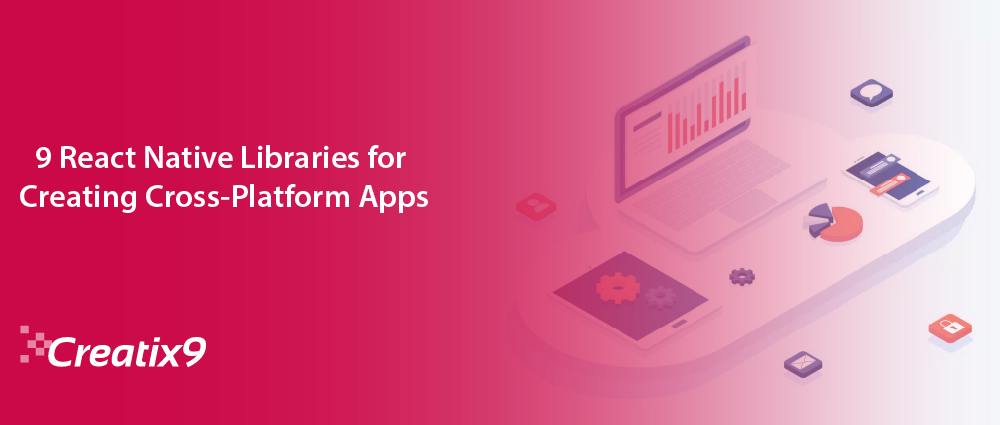
In today’s hyper-connected world, giving mobile apps as a business may not be groundbreaking; it’s more of an obvious choice. With a staggering 3.48 million Android apps and 2.22 million iOS apps, it’s customary to consider both platforms.
When you aim for efficient cross-platform app development, no need to look further than React Native. Facebook introduced this framework in 2015, it will let your app developers in the USA to simultaneously build mobile apps for two platforms.
Here are its notable benefits:
- React Native saves time and money. Thanks to its cross-platform codebase, which covers 95% of the app. Companies no longer need to prioritize one platform over another; they launch on both simultaneously. Moreover, updating React Native apps is a swift procedure.
- The framework promotes flexibility. It enables different native developers to smoothly step in for upgrades or maintenance, even when the original team isn’t accessible. This ensures uninterrupted app performance for users and cost savings for companies.
- React Native apps perform admirably, thanks to using the Graphics Processing Unit (GPU).
- Expanding an existing React Native app is a breeze; there’s no need for a complete rewrite. You easily add React Native UI elements to an app you’ve already built.
- React Native’s “hot reloading” feature empowers developers to witness real-time changes in the application’s codebase.
Best 9 React Native libraries to utilize for cross-platform app development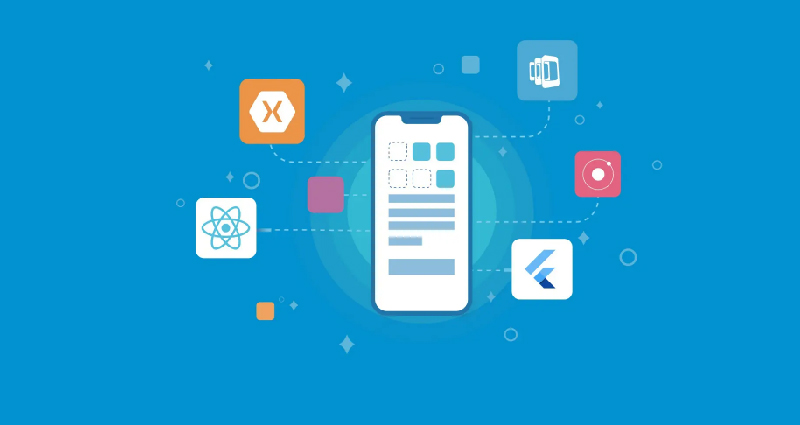
You should employ particular libraries for your Android and iOS apps. To streamline the cross-platform app development route, there’s no denying the many choices available, which be overwhelming. But fear not! We’ve thoroughly researched the topic, and here’s a compilation of 23 essential tools for you to consider:
-
User Interface Libraries
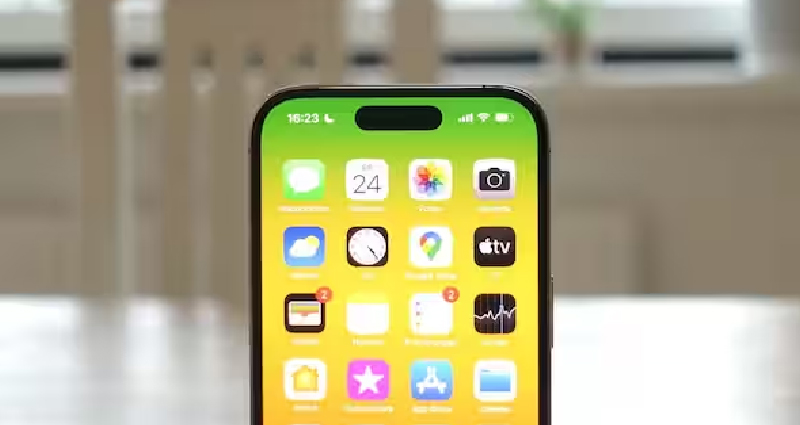
User Interface (UI) libraries are dynamic collections of pre-made UI components like dialogues and buttons, serving as the foundational building blocks for layouts. These modular libraries allow app developers the flexibility to arrange them creatively on the front end. In the following section, we’ll delve into React Native UI component libraries that are ideal for cross-platform app development:
React Native Lotti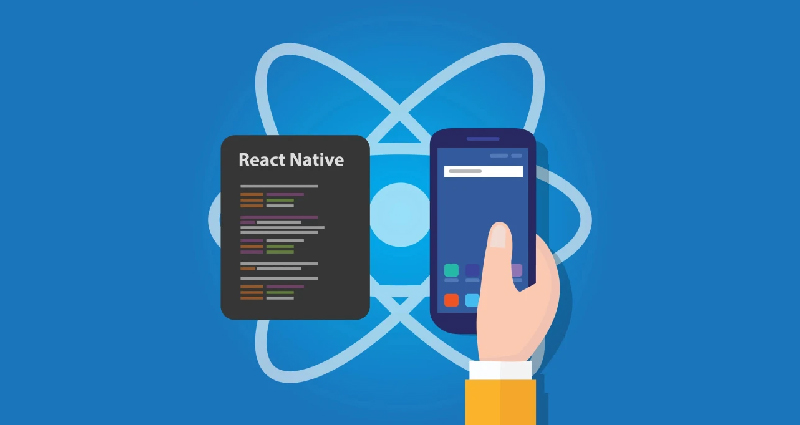
React Native Lotti is an open-source mobile library. It is obtainable on Android and iOS and has various animations for your React Native applications; you pick these animations from the library or make them from scratch using Adobe After Effects.
Key Features are it Simplifies the development of excellent quality animations; with no issue incorporates with tools like ProtoPie, Cocoa Touch (iOS), Haiku and Android SDK; JSON format is used in all animations in the library, enhancing user experiences with vector graphics.
React Native Elements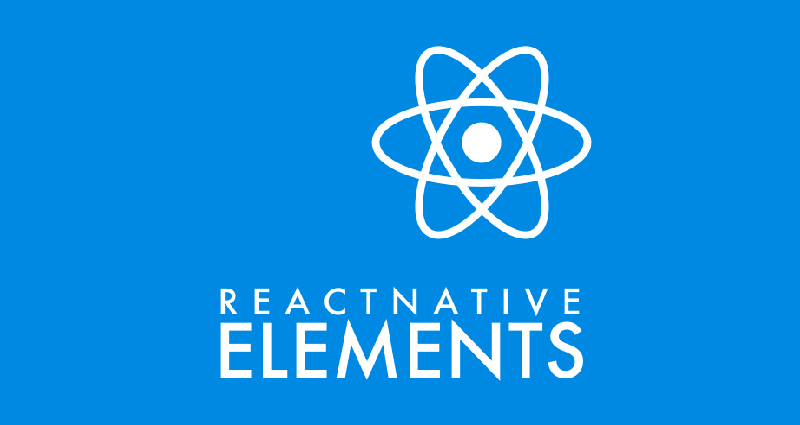
It is a popular cross-platform toolkit. It covering various open-source UI components, comprising avatars, badges, pricing elements, dividers, and more. It consolidates these components. You get consistent APIs for a cohesive look and feel across platforms. A diverse community of app developers actively maintains this toolkit.
Its Key Features are an Easy-to-use JavaScript-based toolkit, ensures a consistent design across mobile (Android, iOS) and web platforms, and has extensive customization options for tailoring components to your specific needs.
React Native Vector Icon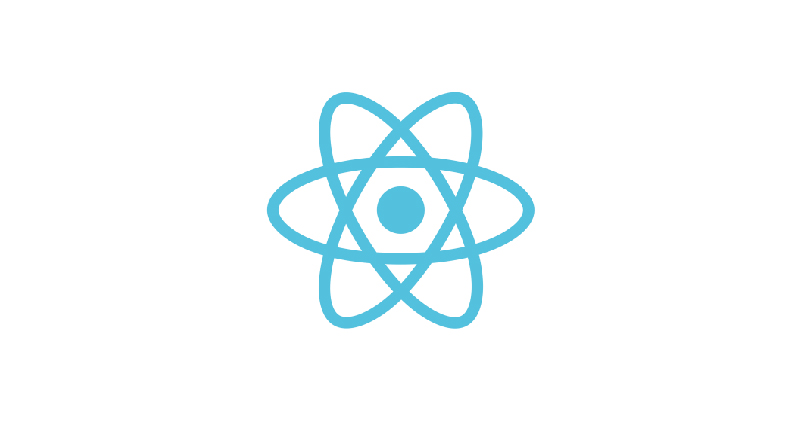
With over 3000 icons, React Native Vector Icons is a versatile library for icon integration in your applications. It simplifies the creation of NavBar, ToolBar, and TabBar components for Android apps.
Key Features are: Supports regular icon fonts and SVG via Fontello; allows for the deployment of custom icon sets without the need to define height or width styles; and All icons in the library prioritize user accessibility settings.
React Native Material Kit
React Native Material Kit, built over Expo, React Native, and Galio.io equips you to bring your app ideas to life— comes with an extensive collection of cards, customizable buttons, navigation elements, and more, following Google’s Material Design principles.
Key Features is a rich toolkit comprising 200+ components actively maintained by the GitHub community; provides pre-built example screens for rapid prototyping, containing onboarding and discovery interfaces; and ensures compatibility with iOS and Android platforms for versatile app development.
React Native MapView
The MapView library provides highly customizable map components for Android and iOS apps. It empowers app developers with control over map features and you implements animations using the Animated API for enhanced user experiences. Key Features are the flexibility to customize map styles, map view regions, overlays, and markers, create engaging animations for smoother user interaction, and create a “getCurrentPosition” function to request user location access.
NativeBase
NativeBase is often the first choice for React Native app developers in the USA. It features a rich assortment of cross-platform components and provides valuable tools for development, with theme templates and starter component kits, with built-in accessibility for design systems.
Key Features have facilitated the creation of a unified interface with customizable attributes; ideal to initiate attractive and straightforward React Native apps; ensures consistent app development across Android, iOS, and the web; and has a diverse component library, having menus, breadcrumbs, action sheets, popovers, and spinners.
React Native Paper
For React Native, it has a pool of customizable, production-ready components. It aligns with Google’s Material Design guidelines and prioritizes accessibility and follows the React Native community’s standards.
Key Features are well-documented and community-maintained library available on GitHub; swiftly builds responsive interfaces for web and mobile platforms; provides access to 30+ custom components suitable for diverse platforms; and complies with accessibility and React Native standards for an inclusive application.
React Native Material UI
Of over 20 highly customizable material, React Native Material UI is an inclusive collection of design components. It covers all aspects of the development procedure, like drawers, avatars, buttons, and toolbars.
Key Features are open-source with a thriving global community; allows without any glitch integration of project styles into visually appealing UI; streamlines navigation functionality, enhancing the overall user experience and detailed documentation exist on GitHub for easy reference; and utilizes a straightforward JavaScript object, Theme, for extensive personalization, making it easy to apply theme changes to other React Native components.
-
Navigation Libraries
Navigation libraries facilitate smooth navigation between various destinations within an app, giving a consistent API. In this section, we’ll explore three cross-platform libraries tailored for React Native app development:
React Navigation
React Navigation aids a range of navigation patterns, including tabs, stacks, and drawers. It’s typically written in Objective C, Java, and TypeScript, ensuring a straightforward setup and a significantly enhanced app experience.
Key Features empower developers to configure most aspects directly within components; have a ‘Themes’ capability for effortless customization of component colours; and supports time-travel debugging, aiding in debugging and testing processes.
React Router
React Router is a comprehensive collection of navigational components flawlessly integrating with your Android and iOS apps. It enables the specification of layouts and named components and simplifies the creation of layouts.
Key Features are utilizes an API based on simple JavaScript objects, enhancing ease of use; the components within React Router facilitate smooth integration with third-party DOM libraries.
-
App Testing Libraries
The development and launch of a successful app require more than just coding; it demands bug-free code. Fortunately, React Native provides a plethora of practical testing tools and libraries. Here are some top contenders:
Jest
Jest, born from the minds at Facebook. It stands as a versatile unit testing framework for mobile applications, primary focus lies in testing JavaScript code, and it effortlessly adapts to various JS frameworks and libraries.
Key Features are Jest introduces snapshot testing, pinpointing tests to app areas that have undergone changes or enhancements, thus speed up the testing process; armed with a user-friendly CLI tool for test management; and inclusive documentation with examples held by an active and helpful community.
Enzyme
Crafted by Airbnb, Enzyme serves as a testing tool gives API wrappers. These wrappers aid developers in asserting, manipulating, and navigating the outcomes of React components. The enzyme is renowned for its simplicity compared to other testing libraries.
Key Features are enzyme’s API is flexible and intuitive, drawing inspiration from jQuery’s API for DOM manipulation and traversal, and Compatible with all central test runners and libraries, and ensures adaptability.
React Native Mock
A newcomer on the testing scene, React Native Mock is a third-party testing solution explicitly tailored for testing React Native apps. It operates seamlessly on Node.js 4+.
Key Features are it provides developers with an entirely mocked and test-friendly version of the application, facilitating changes, and is designed to integrate with the latest React Native version faultlessly.
Mocha
Mocha, a JavaScript-based framework, excels in conducting asynchronous app testing. It executes tests both on Node.js and in web browsers.
Key Features are Mocha upkeeps in-browser testing, carrying out tests in a series; the mature testing tool highlights areas requiring attention in yellow; and leverages JavaScript API for test execution.
-
Fitness Sensor Libraries
These libraries serve as invaluable tools. It is for companies that venture into iOS and Android app development within the healthcare sector. Let’s delve into two fitness sensor libraries:
React Native Apple Health Kit
As the name implies, this library establishes a connection between your React Native iOS application and Apple’s Health Kit.
Key Features are it enables developers to employ the same codebase across all devices, resulting in significant time and cost savings and offers comprehensive and meticulously maintained documentation by iOS developers.
React Native Google Fit
Like its Apple counterpart, this library is tailored for Google. It facilitates a connection between your React Native mobile app and Google’s Health Kit.
Key Features are it provides effortless access to intelligent analysis and sensor data, empowers the development of innovative application features, and provides documentation maintained by Google developers, ensuring strong support and solutions in the face of challenges.
-
Form-building Libraries
Why reinvent the wheel when creating form elements for your app? Form-building libraries offer a collection of components for selects, inputs, buttons, and more. If you’re grappling with form-related challenges in React Native, consider these options:
Formik
Formik is a library designed to simplify form creation in React, with robust validation capabilities. It streamlines the form-building process.
Key Features are that it facilitates form creation and you have seamless data retrieval from and submission to the form state; simplifies debugging, testing, and logical reasoning for form-related tasks; and manages state and change handlers, developers focus on solidifying business logic.
Redux Form
Redux Form offers an efficient method. It manage various form states within the Redux state container, like field values. It without a glitch integrates state management into your application.
Key Features are user-friendly and versatile, enabling the formation of reusable input components for form fields, allowing developers to implement diverse validations for different form-filling scenarios, and even ideal for handling complex forms efficiently.
-
Networking Libraries
Simplifying the networking workflow for your React Native projects is a smart move. Fortunately, there are several networking tools at your disposal. In this section, we’ll delve into four popular networking libraries worth considering:
Axios
Axios is designed for asynchronous HTTP requests and ends at REST endpoints, where you have CRUD operations within your application. It is JavaScript HTTP client and is lightweight.
Key Features are axios empowers developers with request interception, cancellation, and transformation capabilities; automatic JSON data transformation for seamless data handling; and Supports the Promise API for smoother asynchronous operations.
Apollo Client
Apollo Client, a JavaScript-based state management library, facilitates efficient remote and local data management using GraphQL.
Key Features are it enables GraphQL utilization in Android and iOS app development, leverages the latest React features, eliminates concerns about app upgrades, and offers compatibility with diverse build setups and GraphQL APIs.
React Native Firebase
As the name suggests, React Native Firebase closely reflecting the official Firebase Web SDK and above native Firebase libraries, it is a lightweight layer.
Key Features are that for native JavaScript software development kits, it creates a JavaScript Bridge, for authentication purposes, it utilizes iOS GameCenter, and on both Android and iOS platforms, it provides inclusive support for all Firebase services.
React Native BLE Manager
Between BLE peripherals and mobile devices, this communication module eases data transmission and smooth connection.
Key Features—it scan devices, establish connections, and read/write characteristics, and is compatible with iOS 8+ and Android (API 19+) platforms.
-
In-app Purchase Libraries
Developers rely on specific libraries for incorporating in-app purchases into iOS and Android apps. Two such libraries are in widespread use:
React Native Billing
This framework simplifies the addition of in-app billing functionality to Android apps, accompanied by extensive GitHub documentation.
Key Features are the user-friendly interface for straightforward integration, functions as a bridge, and wrapping anjlab’s InApp Billing library.
React-Native-In-App-Utils
Used for implementing in-app purchase features in iOS apps—requires testing on actual devices as simulation won’t yield results.
Key Features are lightweight and easy-to-install library and detailed documentation available on GitHub.
-
React Native Augmented Reality Library
For crafting experiences akin to Pokemon Go or delivering augmented reality (AR) to end-users, consider this library:
ViroReact
ViroReact, an open-source third-party cross-platform solution, allows the creation of AR and VR apps with ease using React Native.
Key Features are that it streamlines creation with a single codebase and helps all mobile AR and VR platforms.
-
Localization Library
To introduce localization capabilities into your apps, you leverage the following library:
React Native i18n
In JavaScript for React Native applications; this library incorporates the i18n-js library. It has an open-source nature and MIT licensing, with documentation exist for both Android and iOS.
Key Features are it is ideal for internalizing and localizing apps effectively and particularly well-suited for server-side rendering.
Conclusion
React Native is a way to create almost any mobile app, and cross-platform app development makes it the best fit for a native IO and Android codebase.
Many brand apps use it (like Adidas, Airbnb, Tesla and Walmart), showing that it advance your app. Are you urgently needing app developers in the USA to build one for you?
Call Creatix9 US or make a callback to know more about our services.
Besides app development, we are the top digital media agency that even help market your app globally.

